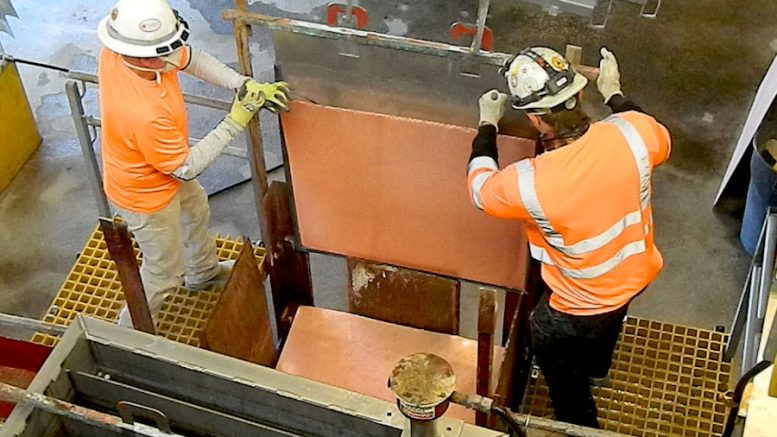Taseko Mines (TSX: TKO; NYSE-AM: TGB; LSE: TKO) has revealed further delays to the permitting timeline for its Florence copper project in Arizona as the company tries to convince the US Environmental Protection Agency (EPA) that the mine will not harm the state’s water supply.
The Vancouver-based miner plans to inject sulfuric acid and water deep underground to extract the already and naturally broken up mineral deposit, a process that some compare to oilfield fracking. Uranium miners in rural parts of Australia and the U.S. have used the method for decades, but in situ leaching has rarely been applied to copper mining.
Worried about potential groundwater contamination, officials in Florence, Arizona, have tried and failed to block Taseko’s project for almost a decade.
“Our process is in no way comparable to fracking, ” Taseko’s vice president of investor relations, Brian Bergot, told MINING.COM. “Solutions easily permeate through the deposit and are drawn back to the surface within a closed system.”
For perspective, Bergot explained that fracking involves injection pressures of up to 15,000 PSI (pounds per square inch). At Florence Copper, the maximum pressure allowed by the permit on injection wells of 0.65 psi/ft.
“The test facility wells typically operated using only gravity at zero PSI and never exceeded 113 PSI during the 18 months we operated the facility,” Bergot noted, adding that Florence unique geology means that core samples taken from the deposit are easily crumbled by human hands.
An appeals court earlier this year put an end to the town’s legal obstructions, which included an attempt to take Taseko’s land via eminent domain.
The company, which had expected the draft underground injection control (UIC) permit from the EPA by June 30, now says it’s not likely to happen before the end of the third quarter.
“Although that timing is later than previously expected, our understanding is there are no issues and that the agency just needs additional time to complete its internal reviews of the permit,” President and CEO Stuart McDonald said in the statement.
Once the draft permit has been issued, there will be a 30-day public comment period with a public hearing scheduled towards the end, similar to the Arizona state process the company completed last year.
The company is optimist about the outcome. It already has the Aquifer protection permit (APP) granted by the Arizona Department of Environmental Quality (ADEQ) in December last year. In March, Taseko won a court battle with the town of Florence that led to agreements approved 6-0 by the local council.
Mine officials have met with thousands of residents over the years and funded local initiatives such as the Florence High School scoreboard, veterans projects, community gardening projects, local food banks and college scholarships.
McDonald, who recently assumed the role of CEO of Taseko, said the miner continues advancing engineering and procurement activities on site in the meantime. They are now preparing to make initial deposits for major processing equipment associated with the SX-EW (solvent extraction-electrowinning) plant, which McDonald says will allow them to efficiently advance mine construction once it receives the final permit.
Florence, about halfway between Phoenix and Tucson, is being developed in two phases. A US$25 million production test facility, with 24 wells and a solvent extraction and electrowinning plant, has been operating since December 2018 to generate copper cathode.
A commercial-scale facility would follow, with the permitting process aimed at transitioning the project into the second phase – this would include an expanded wellfield and plant.
Taseko says the technology chosen for Florence allows for a “green way” of producing copper, which aligns with President Joe Biden’s call to boost local production and electrification plans.
Once up and running, Florence is expected to produce 85 million pounds of copper per year, which would be enough to manufacture 500,000 electric vehicles.
Taseko also reported a 20% increase in copper production at its Pollyanna pit in British Columbia in the second quarter, compared to the previous one.
Its Gibraltar mine, also in B.C., generated 27 million pounds of copper and 400,000 pounds of molybdenum in the second quarter. This compares with 22 million pounds of copper and 530,000 pounds of molybdenum in the first quarter.
Gibraltar is Canada’s second largest copper mine.


Be the first to comment on "Taseko’s Florence mine permit later than expected"